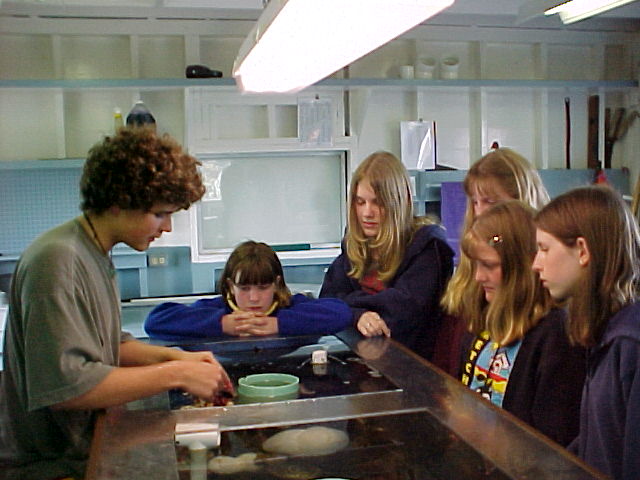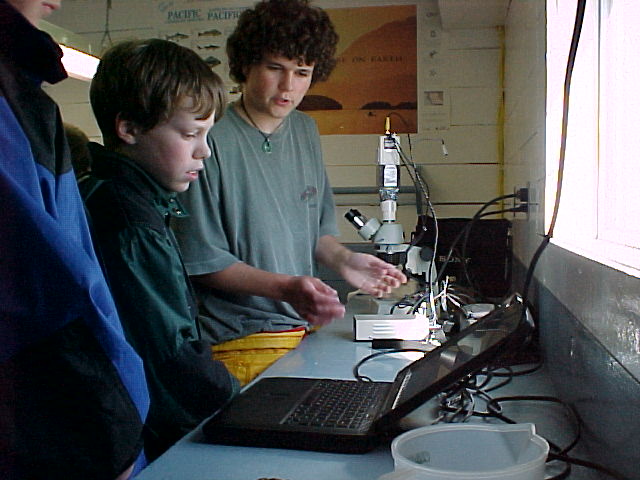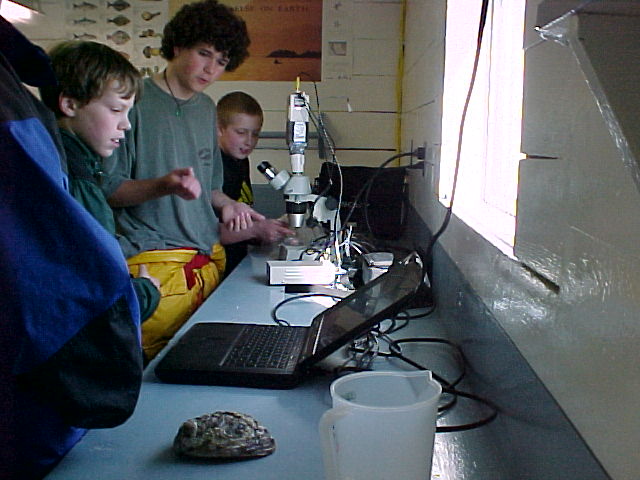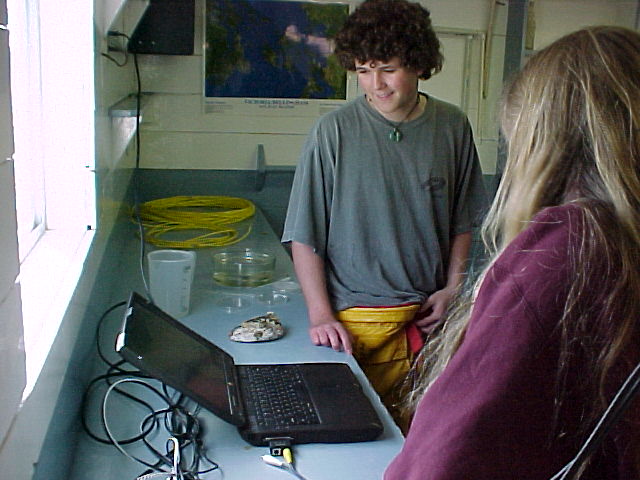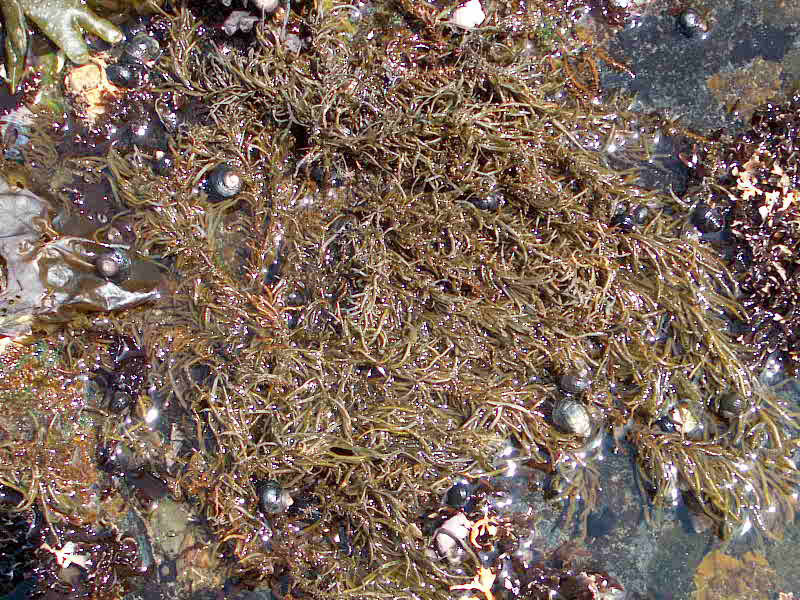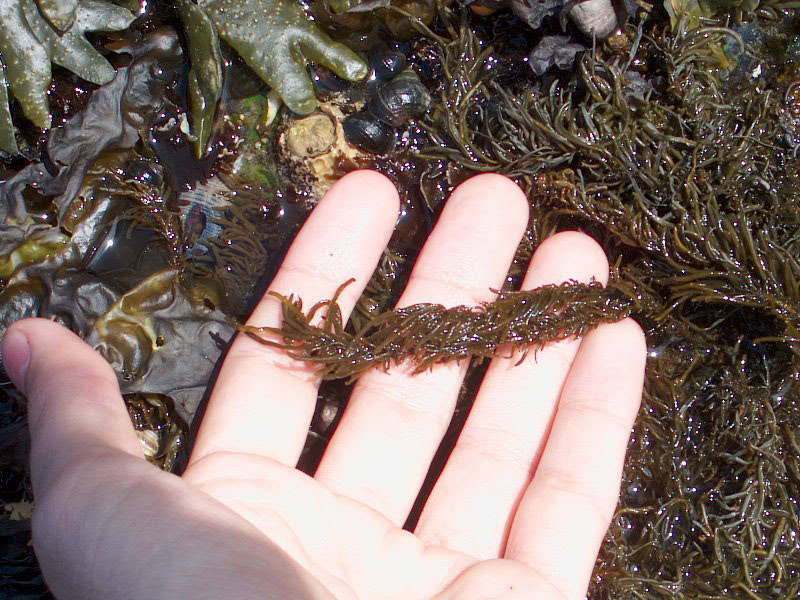TEMPERATURE: Max. 18.3 ºC »» Min. 9.9 ºC »» Reset 15.1 ºC
MARINE LIFE: The fishing is good these past few days at least for the birds and sea lions, have seen some fair size salmon taken just off the end of the dock -a couple looked to be about 3kgs. The birds, especially the gulls rush to pick up any bits of fish that fly about as the sea lions toss and slap their catch at the water surface. There are also a lot of smaller fish which we see jumping, some clearing the surface by a foot or more.
HUMAN INTERACTION: Second Nature out with Garry and students(divers) for live web cast, also Hyaku with Angus and two guests from the Jason Project.The weather could not have been better, over a week now of clear skies and calm seas! There were 5 pleasure craft and 11 Ecotour boats through the reserve, unfortunately at approx. 15:00 one boat from Sea Fun Safaris approached the south shore of North Rks. too close and about half of the 50 or so cormorants took flight.Several sea lions sat up but fortunately did not rush into the water. The sea lions near the dock are quite used to us moving about as long as we move slowly, and don’t make a lot of noise or try to get too close.
posted by Carol or Mike S at 6:05 PM
